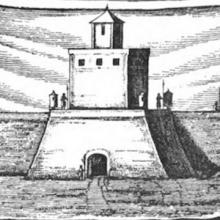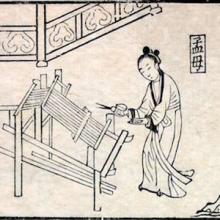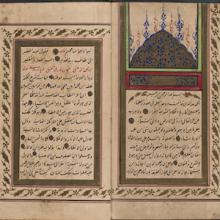Browse Teaching
Explore commonly taught topics along with related primary sources, discussion questions, teaching strategies, and annotated bibliographies.

Long Teaching Module: Gender and Health in Latin America, 1980-2010
Several decades have passed since the conclusion of what the United Nations addressed as the “Decade for Woman” (1975-1985). In many regions of the world, patriarchal relationships between men and women have been toned down, and hierarchies in gender roles have become less rigid. What did these changes mean for women in Latin America?
Long Teaching Module: North African Women and the French Empire, 1850-2000
From the 18th century on, expanding European imperialism across the globe began to pose acute challenges to states and societies throughout Asia and Africa. These challenges held enormous repercussions for indigenous women of all social classes, religions, and ethno-racial backgrounds.

Long Teaching Module: Women in the British Empire, 1800-2000
This module will help students explore the importance of women—both British women and women from British colonies—to the British Empire, as well as their importance in developing an understanding of Britain as an imperial power to a domestic audience at home.

Long Teaching Module: Cultural Contact in Southern Africa
The Portuguese explorer Bartholomew Diaz first saw the Cape of Good Hope—the southernmost point in Africa—in 1488. No attempt was made by a European nation to establish a permanent settlement there, however, until 1652, when the Dutch East India Company (VOC) set up a refreshment station.

Long Teaching Module: Women in the Early Modern World, 1500-1800
Talking about an “early modern world” allows us to investigate the interconnectedness of world cultures, as opposed to their isolation. In fact, the period between 1400 and 1800 was characterized by the advent of the Age of Exploration, which made encounters between cultures almost inevitable, even when some areas (most notably, China) turned inwards and shunned international interactions.
Long Teaching Module: Women in the Islamic World, 600-1600
From its inception in the early 7th century up to the present day, women have played a vital role in shaping Islamic history. However, their voices have often been left out of standard historical narratives, silenced by a lack of primary sources as well as an assumed belief by male historians that they were not part of the development of Islamic civilizations.
Long Teaching Module: Writers of the Heian Era
Japanese cultural history is rather unique because it includes writings by women from the Heian Era (794-1185 CE) among its earliest works of important literature. During this era, Japan saw the creative assimilation of Chinese influences and the flowering of a distinctly native literature and culture.

Long Teaching Module: Bhakti Poets
This teaching module outlines the Bhakti Movement - a Hindu religious movement originating in the 6th century CE that was inspired by a number of prominent women poets. The module contains an essay that provides an overview of history and significance of the Bhakti and a number of images and samples of Bhakti poetry.

Activity: Material Culture and Childhood (20th c.)
Childhood is an ever-changing concept that varies from culture to culture across time and space, yet people often think of childhood as universal. Teaching students about children in the past is often a challenging endeavor for this very reason.

Long Teaching Module: Children in the Slave Trade
From the 16th to the 18th centuries, an estimated 12 million Africans crossed the Atlantic to the Americas in the trans-Atlantic slave trade. Used on plantations throughout the United States, Latin America and the Caribbean, enslaved Africans were shipped largely from West Africa.
Long Teaching Module: African Scouting (20th c.)
Conceived by General Sir Robert Baden Powell to reduce class tensions in early 20th-century Britain, the Boy Scout movement evolved into an international youth movement that offered a romantic program of vigorous outdoor life for boys and adolescents as a cure for the physical decline and social disruption caused by industrialization and urbanization.

Long Teaching Module: Children in Ancient China
The unprecedented interest in the child who assumed unique importance in the Han period was set into motion by a convergence of historically-specific conditions: (1) the establishment in the Qin dynasty (221-207 BCE) and the further development in Han times (206 BCE-220 CE) of a merit-based civil service, which increased the educational and occupational opportunities of boys moving up the socia
Long Teaching Module: Children in Late Imperial China, 900-1930
An exploration of primary sources on childhood in late imperial China (framed broadly as the Song through Qing dynasties, ca. 960-1911 CE) offers a window into lived experience and the diverse ways in which childhood itself could be imagined and articulated.
Long Teaching Module: Educational Reform in Japan (19th c.)
Soon after overthrowing the Tokugawa government in 1868, the new Meiji leaders set out ambitiously to build a modern nation-state. Among the earliest and most radical of the Meiji reforms was a plan for a centralized, compulsory educational system, modeled after those in Europe and America.

Long Teaching Module: Children during the Black Death
The Black Death was the first and most lethal outbreak of a disease that entered Italy during the end of 1347 and the beginning of 1348 and then spread across Europe in the following few years. It is generally accepted (despite recent arguments to the contrary) that this most famous medieval epidemic was caused by bubonic plague.

Long Teaching Module: Children’s Health in Early Modern England
Children and youth in early modern England (1500-1800) were subject to many diseases and physical hardships. From the great epidemic diseases of bubonic plague and smallpox, to more common illnesses such as measles and influenza that still afflict children today, sickness put children and youth at great risk.
Long Teaching Module: Sexuality, Marriage, and Age of Consent Laws, 1700-2000
In western law, the age of consent is the age at which an individual is treated as capable of consenting to sexual activity. Consequently, any one who has sex with an underage individual, regardless of the circumstances, is guilty of a crime.

Long Teaching Module: Parents, Children, and Political Authority in 19th century Argentina
Between 1810 and 1860, Argentina emerged as a deeply divided nation. One of the main problems that remained unresolved throughout the 19th century was how power would be shared between Buenos Aires, the capital, and the rest of the provinces. Juan Manuel de Rosas, who ruled the country between 1829 and 1852, provided some semblance of order.

Long Teaching Module: Education in the Middle East, 1200-2010
In recent years, westerners have been fascinated by the education of children in the Middle East, raising concern over whether or not schools teach extreme radicalism or anti-Americanism. The Arabic word madrasa, which literally means "school," has come to imply in the minds of some pundits and politicians a pro-terrorism center with political or religious affiliation.

Long Teaching Module: New Zealand Childhoods (18th–20th c.)
This teaching module explores how colonization shaped the nature of childhood in New Zealand both among indigenous populations and those of European descent.